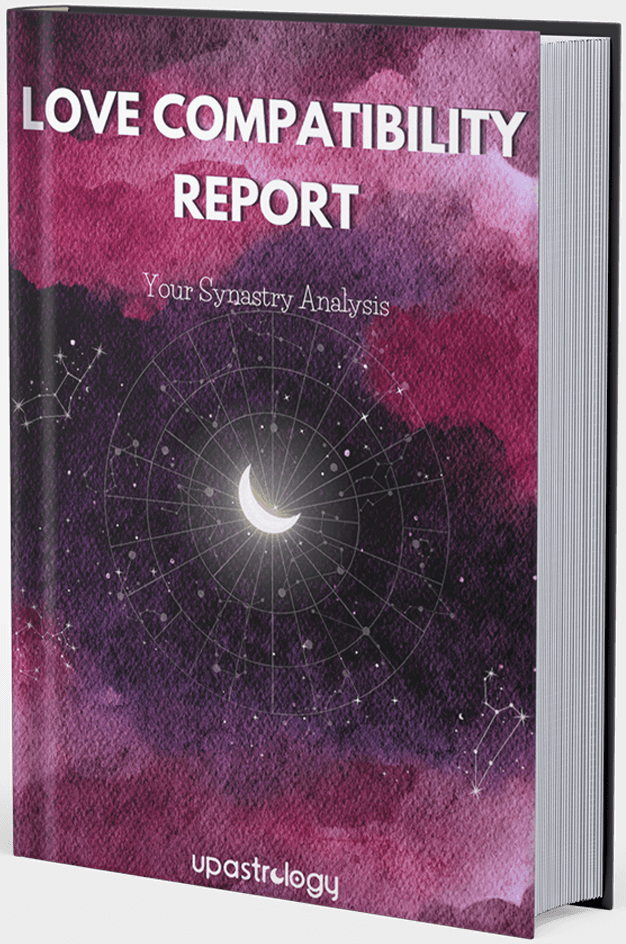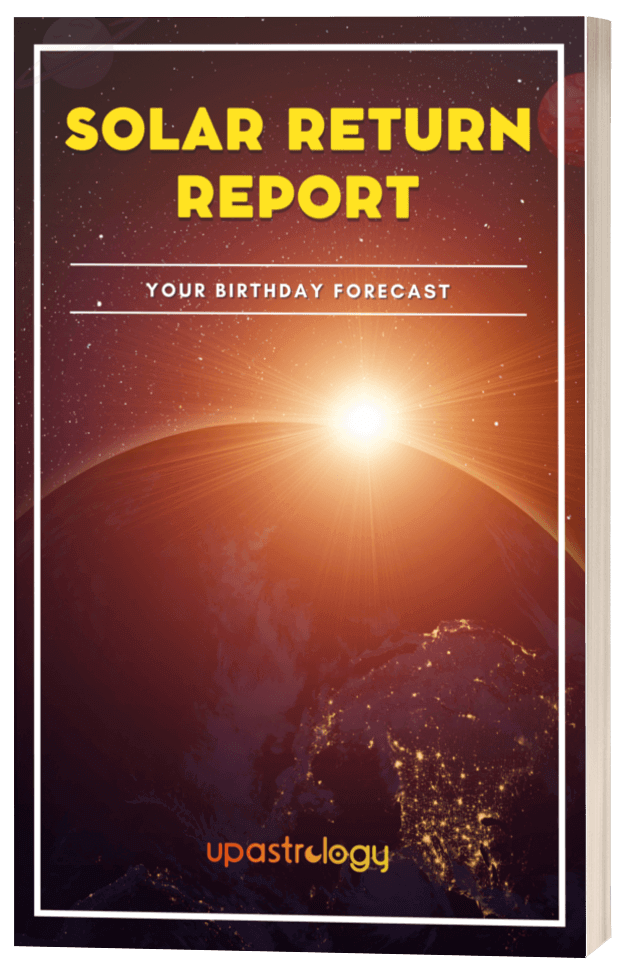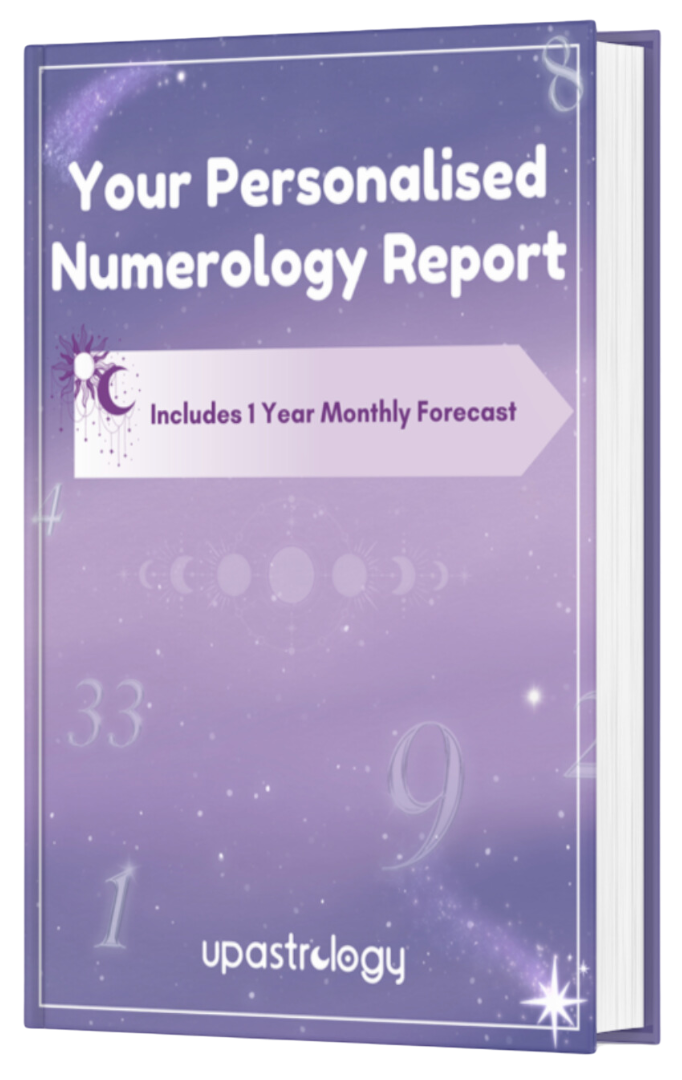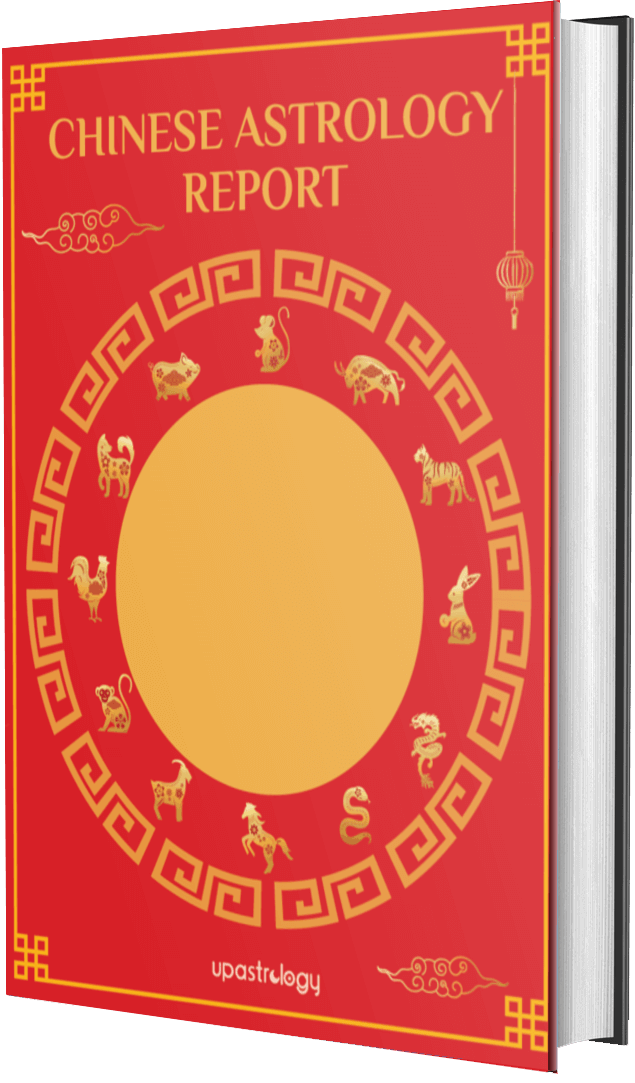Do You Think Astrology Is All About Star Signs and Horoscopes? Think Again
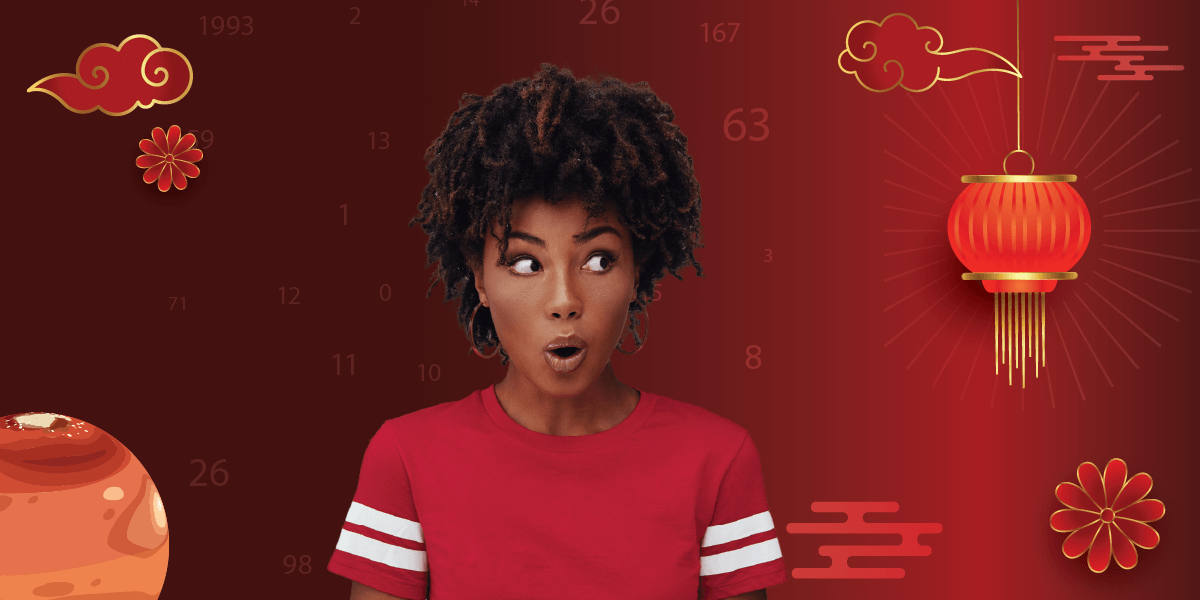
When you hear the word astrology, what's the first thing that comes to mind? For most people, it's probably a brief, generalized horoscope or their Sun sign—a one-size-fits-all forecast found in newspapers or on social media.
And while these daily horoscopes can be fun and relatable, they barely scratch the surface of what astrology truly has to offer.
Astrology is often reduced to simple Sun sign descriptions and daily predictions, but in reality, it's so much more than a few lines about your love life or career luck.
If you think astrology is just about horoscopes, think again.
This ancient study of the stars, planets, and celestial movements is complex and insightful.
It can provide a much richer understanding of who you are, the people around you, and the journey of your life.
Why Astrology Is Much More?
Astrology is a deeply nuanced discipline that considers much more than just your Sun sign.
A full astrological reading is often called a birth chart.
Your birth chart takes into account the precise positions of the Sun, Moon, planets, and other celestial bodies at the exact moment you were born.
This chart is like a unique map that reveals layers of insight into your personality, emotions, values, communication style, and even your life's purpose.
Beyond personality traits, astrology provides guidance on different areas of life, from relationships and careers to personal growth and major life transitions.
For example, synastry, or the study of relationships through astrology, reveals how two people's energies interact, illuminating compatibility and potential challenges.
Planetary cycles, or transits, offer clues to the timing of events, helping people navigate pivotal life changes and make empowered decisions.
Astrology also extends beyond Western methods and incorporates wisdom from traditions around the world.
Some of them are Vedic and Chinese astrology. Each brings a unique cultural and philosophical perspective. When combined, these methods create a more comprehensive roadmap to self-discovery.
Ultimately, astrology is about understanding life in a more meaningful way. It's a journey to discover your unique potential, navigate relationships, and align with your purpose.
It's far from a simple star sign description—it's a powerful tool for transformation and insight.
In the following sections, we'll go deeper into these aspects, unfolding the many layers of astrology.
We'll understand how the study of astrology can contribute to a richer understanding of yourself and the world around you.
After learning that astrology goes far beyond daily horoscopes, the next question is, where do we begin?
The answer lies in a tool at the heart of astrology: the birth chart.
Also known as the natal chart, it is a snapshot of the sky taken at the precise moment and place of your birth.
It captures the positions of the Sun, Moon, and planets and creates a unique map.
It's much more than a simple Sun sign—it's your personal cosmic blueprint.
What Is a Birth Chart?
A birth chart is a personalized map that reveals how the universe was aligned at the exact time you were born.
While it may look like a complex wheel filled with symbols and lines, each of these elements represents an aspect of your inner self and life path.
The birth chart serves as a guide to understanding your unique personality traits, strengths, challenges, and life purpose.
When you complete reading a birth chart, you can completely understand who you are, what you're drawn to, and what themes you may encounter in life.
At its core, a birth chart connects you with your potential.
It shows you where you may experience ease and flow and where you might face challenges or growth opportunities.
Each planet represents a different aspect of self—such as communication, love, or ambition—and each area of the chart points to specific life areas.
When understood as a whole, your birth chart offers a comprehensive, multidimensional view of who you are and where you're going.
Astrology and Birth Chart Reading Beyond the Sun Sign
One of the greatest misunderstandings in astrology is the focus on the Sun sign alone.
In reality, the Sun sign is just one piece of the puzzle. Beyond it, the Moon sign, Ascendant (or Rising sign), planets, and houses each play crucial roles in shaping personality and life experiences.
Let's understand this with some perspective…
The Sun Sign: Represents your core self, your will, and the essence of your identity. It's often the "sign" people refer to, but it's only the tip of the iceberg.
The Moon Sign: The Moon governs your emotional landscape, instincts, and subconscious needs. It's the part of you that feels, reacts, and connects emotionally with others.
The Ascendant (Rising Sign): This is how you appear to the world—the first impression you give others and the way you approach new situations. It's often referred to as the mask you wear, influencing your style and demeanor.
Planets: Each planet in the chart adds another layer to your personality.
For instance: Mercury shapes your communication style, Venus affects your relationships and values, and Mars drives your ambition and energy. Jupiter, Saturn, Uranus, Neptune, and Pluto add depth to areas such as personal growth, discipline, and transformation.
Houses: The chart is divided into 12 houses, each representing a different area of life, from relationships and careers to health and spirituality. The placement of planets in these houses shows where certain energies are most likely to manifest.
Together, these elements go far beyond what the Sun sign alone can tell you.
That's how your birth chart weaves a nuanced portrait of your inner self and life path.
And if you want to understand all the nuances in detail, you need a detailed birth chart report.
How Can a Birth Chart Report Help You?
A Birth Chart Report like that of UpAstrology's provides a detailed, easy-to-understand analysis of your personal cosmic blueprint.
Rather than just telling you about your Sun sign, it dives deep into your Moon sign, Ascendant, planetary placements, and the houses they inhabit.
Each part of the report helps you understand the unique energies that shape your personality, strengths, and life challenges.
A report like that helps you understand how each part of your chart works together to guide you. It offers you clarity about yourself and your purpose.
So, you can completely embody your potential, overcome obstacles, and make choices aligned with who you truly are.
A birth chart like that is not just a bunch of pages. It is in fact a tool for anyone seeking more than just a glimpse of their horoscope. It is your personalized guide to self-discovery.
Having explored the birth chart as a personal roadmap, we can get a little bit idea that astrology has a depth that we have never been able to explore. In fact, we have even barely touched the surface.
Sure, astrology offers a profound understanding of our individuality.
Along with that, astrology can also help us understand our connections with others—how we interact, communicate, and harmonize with those around us.
This brings us to the art of synastry, which focuses on relationship dynamics through the lens of astrology.
Let's Explore The Art of Synastry
Synastry is the astrological study of relationships, comparing two people's birth charts to understand how their energies interact.
While a single birth chart reveals insights into one person's unique personality and life journey, synastry examines how two charts come together to create a shared experience.
This comparison offers a deeper look at romantic, family, and professional relationships, showing the areas where balance and attraction may arise.
From Synastry, you can also understand where challenges or misunderstandings might occur.
In synastry, the planetary placements in each person's chart are compared to identify key points of attraction, support, and potential friction.
For instance, how one person's Venus (representing love and values) aligns with the other's Mars (representing drive and passion) can reveal the nature of romantic attraction.
Mercury placements show how the two people communicate, while Saturn influences the stability and commitment within the relationship.
By studying these connections, synastry helps people understand not only the strengths of their relationship but also areas where growth and understanding are needed.
Understanding Compatibility Beyond Sun Signs
Just as the birth chart goes beyond the Sun sign to explore the full scope of one's personality, compatibility in astrology is much more complex than comparing Sun signs alone.
Many people wonder why they're drawn to someone with a seemingly incompatible Sun sign, but this is where synastry shines—it looks at the whole picture.
For example:
Moon Signs: These show each person's emotional world and comfort needs, impacting how they feel supported and nurtured.
Venus Placements: Venus governs love, affection, and values, influencing relationship compatibility and romantic attraction.
Mars Placements: Mars relates to passion, drive, and assertiveness, affecting dynamics in attraction and conflict.
By understanding the full range of planetary placements, synastry reveals the subtleties of compatibility.
It helps people see where they complement each other and where they might encounter challenges.
This goes far beyond typical Sun sign compatibility. Rather it helps you understand your relationship dynamics better with a nuanced perspective. To make complete sense of it, you will need a synastry report.
A Synastry Report like that of UpAstrology offers a comprehensive analysis of two birth charts, highlighting areas of compatibility and growth.
It studies how each partner's energies interact. So, the relationship can find balance. Whether for romantic, family, or business relationships, this report can be a powerful tool for nurturing meaningful connections.
From syanstry, you, as a couple, and as an individual can easily explore the strengths and challenges in your relationships.
In turn, you can support yourself in building more balanced, understanding, and fulfilling connections.
Synastry allows you to see how astrology can enrich our relationships with growth and compassion.
Astrology reveals the dynamics within ourselves and our relationships. It provides insights into self-exploration, compatibility, and connection through birth chart and synastry.
But while astrology charts have a strong influence on our lives, numbers are no less.
Numerology, like astrology, is a tool for self-discovery and understanding.
Yet it approaches this knowledge through numbers rather than planets and signs.
When used together, astrology and numerology create a holistic picture of personal potential, challenges, and purpose.
What Is Numerology?
Numerology is the study of the energetic and symbolic meanings of numbers, particularly those associated with our birth date and name.
Each number carries a unique vibration, influencing personality traits, strengths, challenges, and life paths.
Through numerology, your birth date is transformed into key numbers—such as your Life Path Number and Expression Number—that reveal different aspects of your character and destiny.
It's a way to find out about your innate gifts, life purpose, and areas where you might encounter obstacles.
For example:
Life Path Number: This number is calculated from your birth date and is considered the core of numerology. It provides insights into your purpose, guiding themes, and life journey.
Expression Number: Derived from the full name given at birth, this number sheds light on your strengths, abilities, and natural talents.
In this way, numerology acts as a personal guide to your soul's journey. It helps us know about our inner nature and the lessons we are here to learn.
The Intimate Connection Between Numerology and Astrology
While astrology and numerology are distinct systems, they align in powerful ways, each adding depth to the other.
Astrology provides insights based on the positions of planets and stars. It shows us how their influence shapes our personality and life events.
Numerology, on the other hand, reveals vibrational patterns tied to the dates and names we carry with us. Together, they offer a multifaceted approach to self-understanding and growth.
For instance, both numerology and astrology can provide guidance on life purpose and personality traits.
While your astrology chart may highlight qualities based on your Sun, Moon, and Rising signs, your Life Path Number in numerology might emphasize similar strengths and challenges.
Your numbers bring another layer of affirmation. This complementary approach helps you to see themes in your life from multiple perspectives.
So, you gain a richer, more rounded view of your journey.
As we delve deeper into astrology and self-discovery, it's clear that understanding ourselves and our lives can benefit from diverse perspectives. Western astrology and numerology, each offering unique ways to connect with our inner nature and life purpose.
But there is yet another powerful system that enriches our understanding that comes from Eastern wisdom: the Chinese Zodiac.
Rooted in ancient Chinese culture, this tradition offers a distinct view of personality and destiny, based not on planetary positions but on the energies of the lunar cycle.
What Is the Chinese Zodiac?
The Chinese Zodiac is an ancient system that works on a 12-year cycle, where each year is associated with one of twelve animal signs: Rat, Ox, Tiger, Rabbit, Dragon, Snake, Horse, Goat, Monkey, Rooster, Dog, and Pig.
According to legend, these twelve animals raced across a river to meet the Jade Emperor.
The emperor assigned each animal a place in the cycle based on its order of arrival.
Each animal is believed to embody specific qualities, and those born in a particular year carry the characteristics and energies of their animal sign.
Unlike Western astrology, which divides personalities based on the month and day of birth, the Chinese Zodiac assigns a year-based sign.
It reflects broader cycles of personality and destiny.
Each animal year is thought to influence not only personality traits but also compatibility with others, favorable career paths, and potential life challenges.
Additionally, the Chinese Zodiac incorporates a five-element system—Wood, Fire, Earth, Metal, and Water—that further refines each animal's influence, adding another layer of insight.
The Difference and Intervention of Western Astrology and Chinese Zodiac
Western astrology and the Chinese Zodiac have distinct origins and approaches, they complement each other in fascinating ways.
Western astrology uses a Sun-based system, focusing on planets, signs, and houses to reveal personality and life events.
In contrast, the Chinese Zodiac follows the lunar calendar, connecting personality with yearly cycles, animal archetypes, and elements.
The combination of these systems allows for a richer understanding of one's inner world.
Western astrology shows you the psychological and emotional dimensions of your personality. On the other hand, the Chinese Zodiac introduces an annual rhythm to life's energies. It highlights the themes of inner happiness, balance, and the interplay of Yin and Yang.
Together, they form a well-rounded view of your personality, life purpose, and the cycles of growth we encounter.
With different astrological systems, each offers a unique perspective on our journey and purpose. Western astrology, numerology, and the Chinese Zodiac… Each contributes to the layers of self-knowledge.
Now, we turn to another ancient system—Vedic astrology, or Jyotish—which brings a profound spiritual dimension rooted in Indian philosophy.
Vedic astrology, or Jyotish, is an ancient astrological system originating in India and based on Vedic wisdom.
Unlike Western astrology, which uses the tropical zodiac, Vedic astrology relies on the sidereal zodiac. That's how vedic astrology aligns more closely with the actual positions of constellations.
Vedic astrology emphasizes the concept of karma—actions from past lives influencing our current incarnation. Through its detailed analysis, Vedic astrology seeks to illuminate your dharma (life purpose) and guide you toward spiritual growth and fulfillment.
Central to Vedic astrology are concepts like nakshatras (lunar mansions) and dashas (life periods). Nakshatras divide the sky into 27 lunar segments, each carrying specific qualities that influence one's character and destiny.
Dashas, on the other hand, are planetary periods that guide timing in your life journey. Through the dasha system, you get to know when certain life events may occur.
Together, these techniques full and karmic perspective.
It helps you understand both your immediate experiences and your broader spiritual path.
Differencing Similarities Between Western and Vedic Astrology
While both Vedic and Western astrology seek to reveal personality, potential, and life events, their approaches differ significantly.
Western astrology often emphasizes psychological insight and self-empowerment. It focuses on the Sun, Moon, planets, and houses.
Vedic astrology, however, places greater emphasis on karma and dharma. It uses nakshatras to highlight the soul's lessons and dashas to map out life periods aligned with karmic patterns.
For instance:
Nakshatras provide highly detailed personality insights and are often seen as representing the soul's qualities.
Dashas structure life events according to the influence of specific planets. It shows how these energies affect different periods and key life decisions.
This karmic lens gives Vedic astrology a unique depth. It focuses not only on individual growth but also on the soul's journey across lifetimes.
To understand this vividly, you need to look at your complete Vedic portrait.
Thus far, we've explored the many layers of astrology and its complementary systems. From the personal insights of the birth chart to the karmic perspective of Vedic astrology.
Yet there's another dimension of astrology that influences us daily: the world of transits.
While birth charts offer a snapshot of the sky at birth, transits show how the ongoing movement of planets impacts our lives.
Transits bring shifts in mood, energy, and opportunities.
So, you need to understand the transits to understand the constant ebb and flow of your life.
Understanding Transits to Understand the Ever-Changing Themes of Life
In astrology, transits refer to the current positions of planets as they move through the sky in real-time.
As planets transit the zodiac, they form aspects (or angles) with the placements in our birth charts, triggering changes in energy, mood, and circumstances.
These transits can be subtle or dramatic, lasting from a few hours (such as the Moon moving through a sign) to several years (like Pluto transiting through a house or sign).
For example, a Moon transit might influence your emotional state for a day, while a longer Saturn transit may shape an entire life phase, bringing lessons in discipline and growth.
Transits are often at the root of why we feel differently on certain days or during particular periods of life.
They can signal favorable times for romance, career moves, or self-reflection and also serve as reminders to be mindful of challenges that need patience and resilience.
How Do the Key Transits Impact Your Life?
Some transits have become well-known due to their widespread impact on people's lives, transcending typical horoscopes. Here are a few notable examples:
Mercury Retrograde: This transit occurs several times a year when Mercury appears to move backward in the sky. Known for disruptions in communication, technology, and travel, Mercury Retrograde often prompts people to slow down, review, and rethink their plans. While it's often blamed for mishaps, it can also be a valuable time for introspection and refining ideas.
Saturn Return: A major milestone in astrology, the Saturn Return happens around ages 29, 58, and 87 when Saturn returns to the position it was in at birth. It represents a period of maturity, responsibility, and significant life changes, often bringing challenges that encourage growth and transformation. For many, it's a time to reevaluate goals, careers, and relationships, aligning with a deeper sense of purpose.
These and other transits provide insight into why certain periods feel intense or challenging, offering context for the ups and downs we experience.
They serve as cosmic weather forecasts that help us prepare for what lies ahead.
Navigating these impactful transits can be smoother with the right mindset, remedies, and tools.
So far, we've made it clear that astrology is so much more than the Sun sign horoscopes most people encounter in daily life.
Each tool we've explored—whether it's the birth chart, synastry, numerology, the Chinese Zodiac, Vedic astrology, or the dynamic influence of transits—reveals a unique piece of our cosmic blueprint.
These insights are far from being mere predictions.
In fact, they form a powerful system for self-discovery. They guide us toward greater self-awareness, resilience, and personal growth.
Astrology helps us explore ourselves in depth and recognize our own potential.
Whether you're curious about your personality, relationships, life path, or timing for important decisions, each modality offers a new lens through which to understand yourself and the world around you.
When you have a fuller view of wisdom and the power of astrology, you open doors to a richer, more nuanced understanding of who you are and how you connect with others and the universe.
Share on:
Explore More
Synastry
Why Are They Not That Into You: Worst Synastry Aspects You Can’t Ignore!
Astrology
Synastry Secrets: How Black Moon Lilith Shapes Love and Desire
Synastry, Compatibility
Which is the Most Compatible Sign for You?
Featured Blogs

Moon phases
The Phases of the Moon and Your Love Life: What to Do and When!
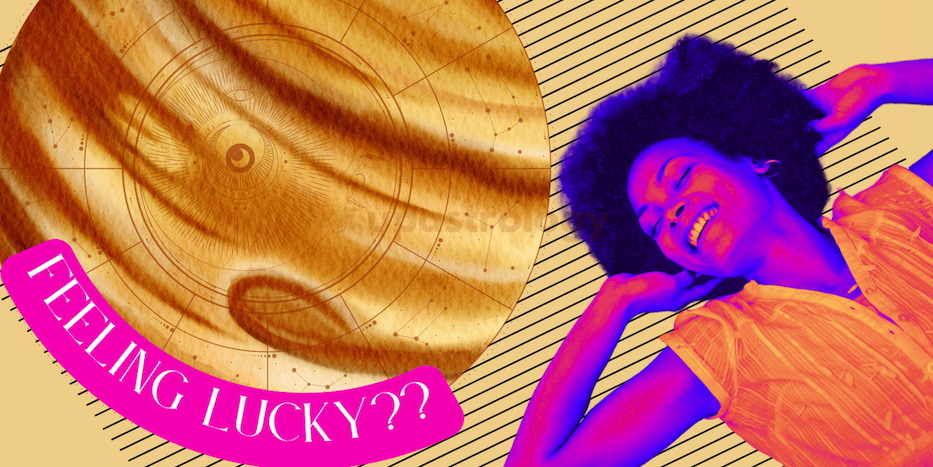
Birth chart
Jupiter: Is the Mighty Planet of Fortune on your side?

Transit




